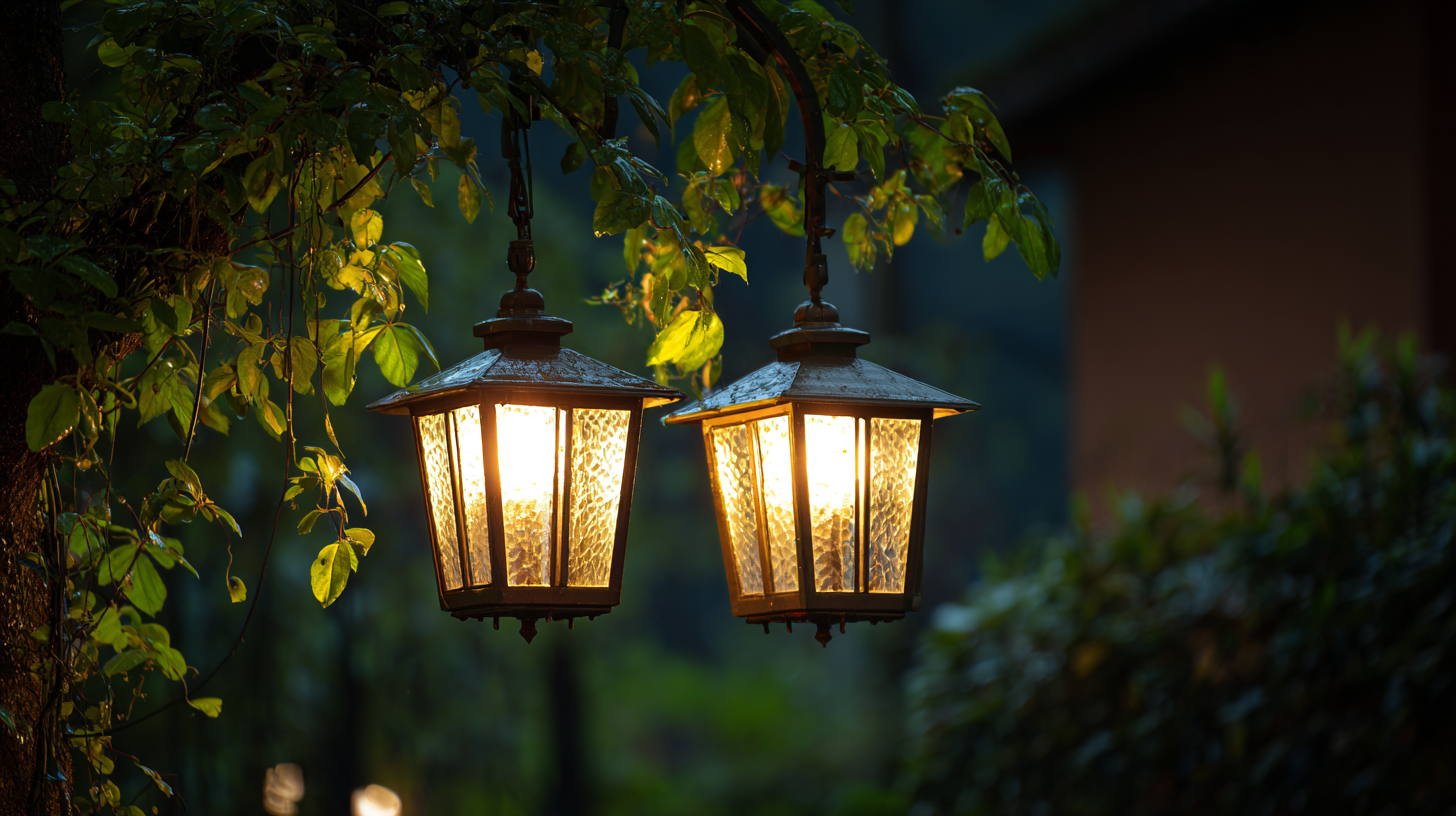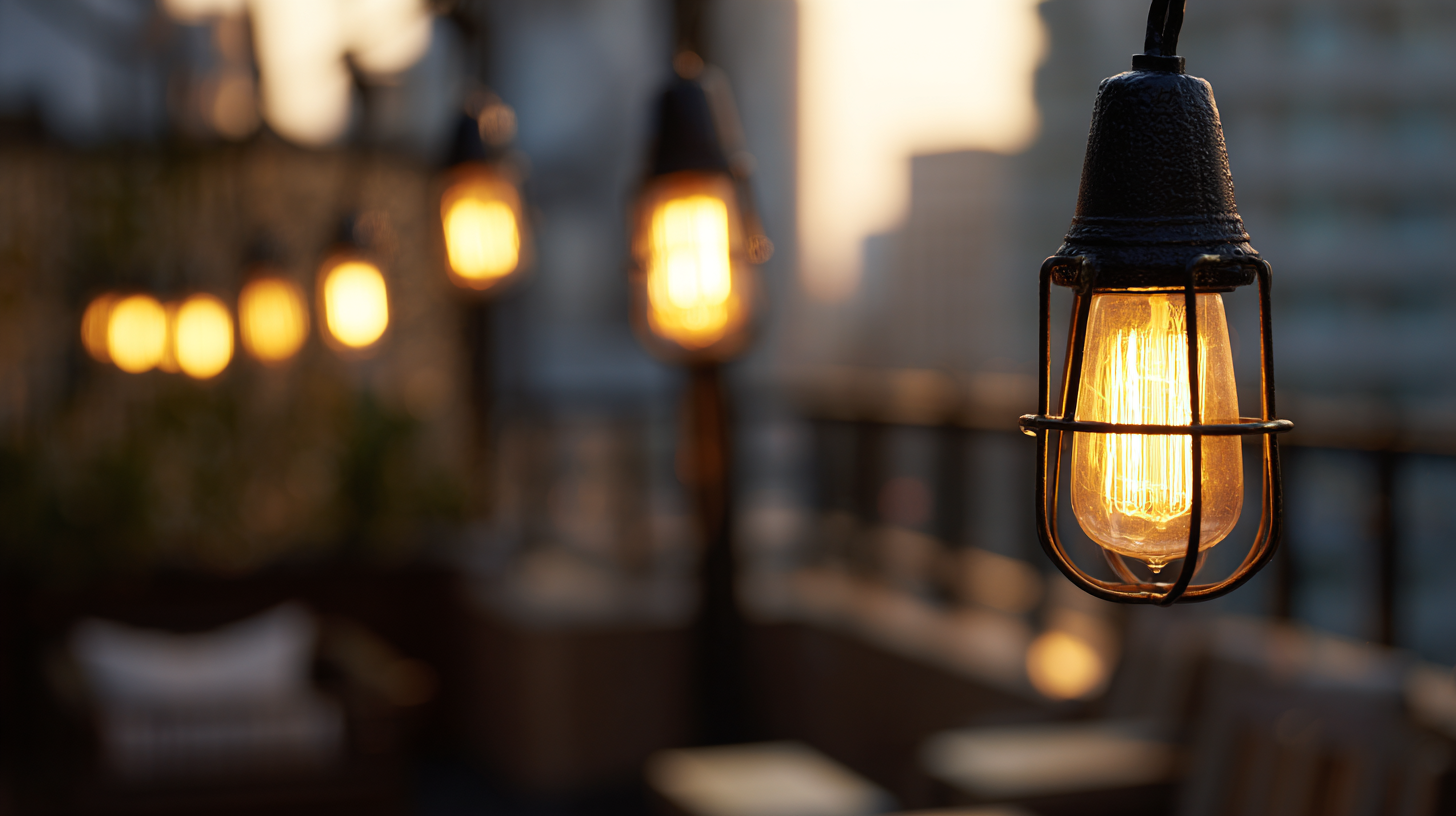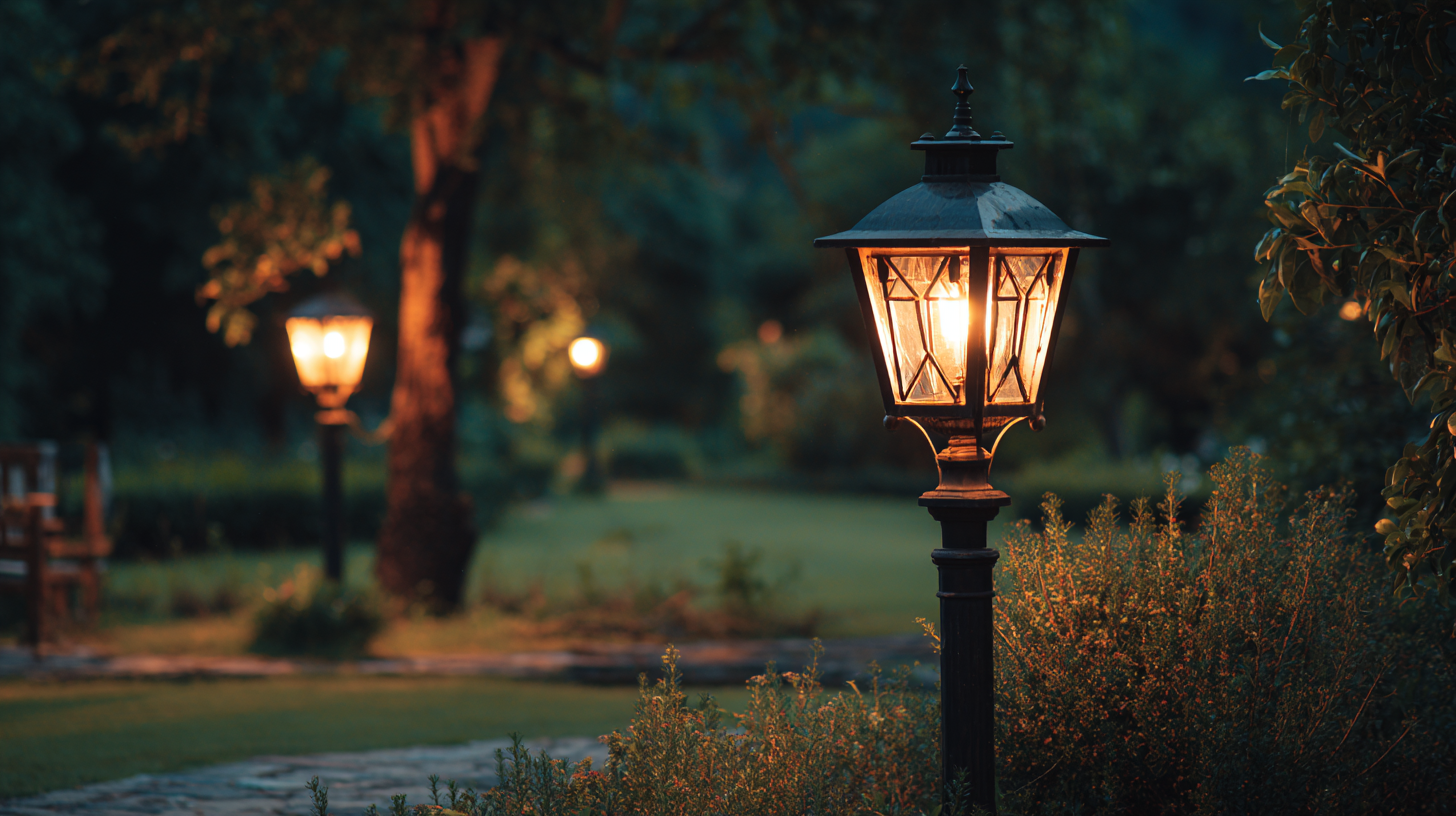Issues with Best Outdoor Lights That Every Global Buyer Should Know
When it comes to enhancing the beauty and functionality of outdoor spaces, choosing the right outdoor lights is crucial for every global buyer. However, navigating the myriad of options available can present certain challenges that may lead to frustration and uninformed decisions. In this blog, we will explore the common issues buyers face when selecting outdoor lights, ranging from energy efficiency and durability to style and installation complexity. By understanding these pitfalls, consumers can make informed choices that not only illuminate their gardens and patios but also complement their overall outdoor aesthetics.

Join us as we delve into practical solutions and expert tips that will guide you through the process of selecting the perfect outdoor lights for your needs.
Market Overview: Projected Growth of the Outdoor Lighting Industry by 2025
The outdoor lighting industry is projected to experience significant growth, with a market estimation reaching approximately $8.75 billion by 2025. This increase can be attributed to the rapid urbanization, which has heightened the demand for effective outdoor lighting solutions. The market encompasses a wide range of applications, including residential, commercial, and industrial sectors, with LED technology playing a pivotal role in driving innovation and sustainability.
Furthermore, the LED neon light segment is particularly noteworthy, expected to grow from $1.3 billion in 2024 to over $3.3 billion by the end of 2037. This growth, reflecting a compound annual growth rate of 7.5%, underscores the rising popularity of visually appealing and energy-efficient lighting options. As consumers seek environmentally friendly alternatives, manufacturers are increasingly focusing on developing advanced lighting solutions that cater to both aesthetic and functional needs.
Regional insights also indicate a strong uptick in various markets, propelled by growing awareness of the benefits of efficient lighting technologies. Emergency lighting markets are projected to grow at 6.99% from an estimated $875.46 million in 2025 to for an expected $1.5 billion by 2033, while the bicycle and components market is set to flourish, indicating diverse applications for outdoor lighting solutions. As trends evolve, stakeholders must remain vigilant to capitalize on these lucrative opportunities and address the pressing needs of global buyers.
Key Factors Influencing Outdoor Lighting Trends for Global Consumers
As global consumers remain increasingly focused on enhancing their outdoor spaces, understanding the key factors influencing outdoor lighting trends becomes essential. The rise of private labels highlights a shift toward budget-friendly yet stylish options for outdoor lighting, making quality illumination accessible to a wider audience. This trend is driven by a desire for personalized home aesthetics and functionality, with consumers seeking fixtures that not only light up their gardens but also complement their overall outdoor decor.
Additionally, sustainability plays a pivotal role in shaping these trends. Consumers are becoming more mindful of their environmental footprint, opting for energy-efficient and eco-friendly lighting solutions. This shift influences manufacturers to innovate with sustainable materials and technologies, reflecting broader movements across markets, including home improvement and gardening.
As consumers prioritize wellness and a connection to nature, outdoor lighting is increasingly viewed not just as a utility, but as a critical element of landscape design that enhances outdoor living experiences.
Comparative Analysis of LED vs. Traditional Outdoor Lighting Solutions
When it comes to outdoor lighting, the choice between LED and traditional lighting solutions can significantly impact both performance and energy efficiency. According to a report by the U.S. Department of Energy, LED lights use at least 75% less energy than incandescent lighting, making them a superior choice for reducing electricity bills and minimizing environmental impact. In fact, a typical LED can last up to 25,000 hours, compared to the 1,000-hour lifespan of traditional bulbs. This durability not only decreases replacement costs but also lessens the frequency of maintenance required, which is particularly beneficial for outdoor applications.
Furthermore, a comparative analysis by the Lighting Research Center highlights that LEDs provide better quality light. They can produce a higher lumens-per-watt ratio, meaning more light output for the same amount of energy consumed. This efficiency translates to brighter and more effective outdoor illumination, enhancing safety and security in residential and commercial spaces. With outdoor lighting being a key factor in improving visibility and deterring crime, investing in LED solutions can prove advantageous both economically and functionally. As the market continues to shift towards energy-efficient solutions, understanding the benefits of LED versus traditional lighting is essential for every global buyer looking to make informed purchasing decisions.
Issues with Best Outdoor Lights That Every Global Buyer Should Know - Comparative Analysis of LED vs. Traditional Outdoor Lighting Solutions
| Aspect | LED Lighting | Traditional Lighting (Incandescent) |
|---|---|---|
| Lifespan | 25,000 - 50,000 hours | 1,000 - 2,000 hours |
| Energy Efficiency | 80-90% more efficient | Less efficient |
| Initial Cost | Higher | Lower |
| Heat Emission | Low | High |
| Light Quality | Available in multiple color temperatures | Warm light |
| Environmental Impact | No hazardous materials | Contains hazardous materials (e.g., mercury) |
| Dimming Capability | Easily dimmable | Limited dimming options |
| Maintenance | Low maintenance | Frequent replacements needed |
Consumer Preferences: Sustainable Choices Shaping the Outdoor Lighting Market
As consumer preferences evolve, sustainability has emerged as a primary driver in the outdoor lighting market. According to a recent report by Grand View Research, the global sustainable lighting market is projected to reach $96.8 billion by 2025, indicating a robust shift towards energy-efficient solutions. This trend is largely attributed to increasing consumer awareness about environmental conservation and the rising cost of electricity. Many buyers are now opting for LED fixtures and solar-powered lights, which not only reduce energy consumption but also minimize carbon footprints.

Additionally, a survey conducted by Statista found that 72% of consumers favor brands that demonstrate a commitment to sustainability when making purchasing decisions. This statistic underscores the importance for manufacturers to innovate and focus on eco-friendly practices. Brands that incorporate recycled materials and offer products with longer life spans are likely to resonate more with environmentally conscious shoppers. As the outdoor lighting market continues to grow, the integration of sustainable practices will be crucial for companies looking to meet the demands of the modern consumer.
Common Issues with Outdoor Lighting Tech: Ensuring Reliability and Longevity
When investing in outdoor lighting, it's essential to understand the common issues that can affect reliability and longevity. One major concern is weather resistance. Outdoor lights often face harsh conditions like rain, snow, or intense sunlight, which can lead to premature failure. Buyers should look for products with high IP ratings, indicating their ability to withstand different environmental challenges. Additionally, selecting materials that are corrosion-resistant, such as stainless steel or aluminum, can significantly enhance the durability of outdoor fixtures.

Another critical aspect to consider is energy efficiency. Many outdoor lighting options still rely on outdated technology that consumes excessive power and has shorter lifespans. Consumers should opt for LED lights, which not only provide bright illumination but also boast a longer operational life and reduced energy costs. Furthermore, features like motion sensors can optimize energy use by ensuring lights are only active when needed. By being aware of these common issues, global buyers can make informed decisions that maximize the effectiveness and longevity of their outdoor lighting solutions.

